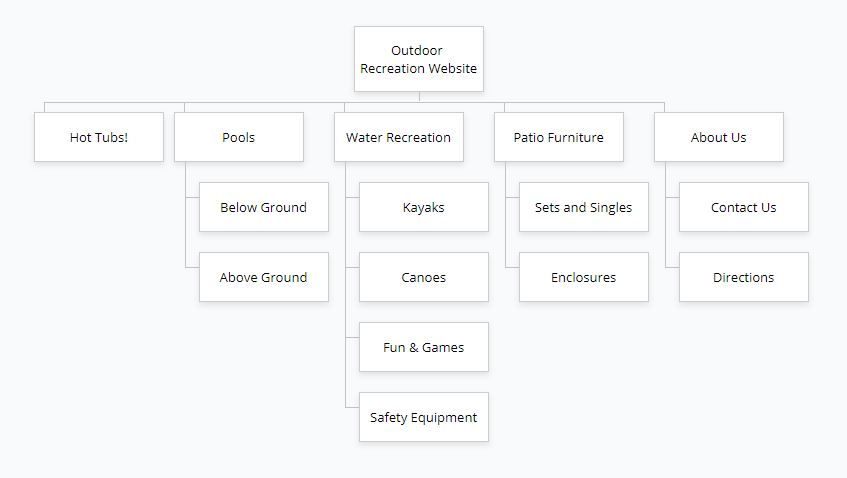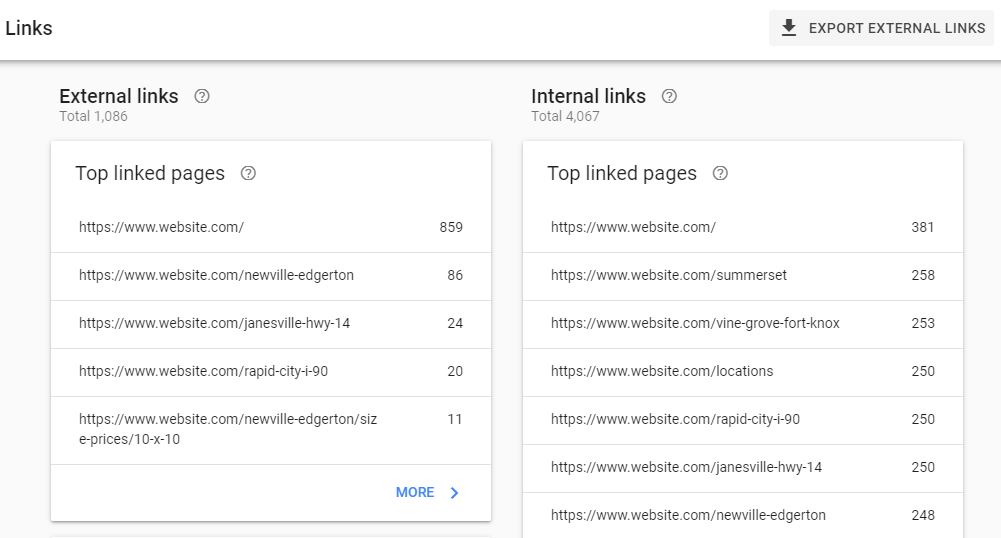Last Updated 1/31/24
The call for a new website sets a series of events in motion. A “Redesign Committee” is formed to collect RFPs, engage with project managers, and usher in a new phase of development. Graphic designers craft visual concepts, marketers fine-tune engaging content, and developers bring the vision to life. With the launch of the new site, attention turns to SEO. You cross your fingers hoping your ranking goes up.
If Content Is King, How Do You Find It?
Priority #1 on a website is to create engagement for visitors. We want to guide website users beyond a single page of content and convert into an interested party, lead, or sale. To achieve this, content must be categorized logically so it is readily available and easy to find. For instance, list 'nuts and bolts' under 'hardware' and 'hammers and saws' under 'tools' while considering their place in the broader hierarchy.
Hi·er·ar·chy (/ˈhī(ə)ˌrärkē/) - an arrangement or classification of things according to relative importance or inclusiveness.
A well-organized content hierarchy that supports the main business focus is key. In a website redesign, categorize your content and use flowcharts to establish this hierarchy. Planning the site's navigation is vital – it serves as a digital table of contents, guiding visitors through the website efficiently.
Rethinking Website Navigation
Website navigation (sometimes referred to as the “menu”) is the term applied to a website’s or mobile app’s “outline” of site pages. It’s the strip of internal links at the top of all pages that shows site visitors the categorical content of the website.
In a sense, the site’s navigation is similar to a table of contents that outlines the major topics and references by page number supporting text. Technical and instruction manuals, magazines, and cookbooks all have outlines for the reader to find and drill down to what they are looking for.
Navigation should prioritize important content. For example, if 'hot tubs' are a top seller on an outdoor furniture website, they should be prominently featured in the navigation, rather than being nested under a broader category like 'Water Recreation'.

Most people read from left to right. Therefore, the most important content should come first in your website’s navigation, as that’s what the majority of your visitors are looking for. That vital content should be what your business and website are known for.
Enter the search engines ranking the best known content. Search engines crawl websites top to bottom and left to right. The website’s navigation presents the first links that Google will crawl for search engine ranking. If your goal is to sell a product or service, having the “About Us” page linked first on the main navigation doesn’t give search engines the most important content first.
There’s a balance between usability and SEO that is best addressed through research.
Leveraging Google Analytics 4 for Optimized Navigation
Google Analytics 4 offers advanced tools for analyzing website traffic and user behavior, a crucial task for optimizing website navigation.
Review Website Traffic Analytics
Website traffic analytics are big indicators of where your site’s users are moving beyond a single page. Using Google Analytics 4, assess traffic patterns, bounce rates, and user engagement. Identify underperforming pages and improve or reposition them in the navigation structure.
Utilize Google Analytics 4 Reports
- Navigation Summary: Located under 'Behavior', the 'Site Content' section provides insights into user navigation from the homepage, revealing popular topics and pages.
- Behavior Flow Report: This report helps identify key topics and navigation paths, allowing you to prioritize content in the main navigation. Segment the traffic to focus on conversion paths for deeper insights.
- Internal Site Searches: Analyze on-site search queries to identify content that users struggle to find, and consider incorporating these terms into your navigation.
Insights from Google's Search Console
In Google's Search Console, the 'Links' section shows the most linked pages within your site. This data helps identify pages that might be less relevant, guiding decisions on their placement in the navigation. If the content is not core to your business purpose, it is taking up search engines' crawl time when they revisit. If a link is needed on all pages, like “Support,” you may be able to add it to the site footer depending on its importance.

Combining Market Research and Analytics
Gather insights from analytics and competitor analysis. Observe how competitors structure their navigation and integrate industry terms. Combine these findings to refine your site's navigation.
Search Engines and Navigation
Search engines prioritize sitemaps and main navigation links. A sitemap is a file on a website that lists the most important pages. Unseen by website visitors, it performs important behind-the-scenes work. Think of it as a map for your website that helps search engines find and index your content more easily.
Tailor your navigation with descriptive, SEO-friendly terms, like 'Industrial Welding' instead of just 'Welding', to enhance search engine indexing and rankings.
The key to a successful website redesign lies in balancing user experience with search engine requirements. A well-designed navigation structure not only aids visitors in finding information but also enhances your site's visibility in search engine results. With Google Analytics 4, you have a powerful tool at your disposal to make data-driven decisions for your website's redesign.
FAQs
- What is the primary goal of updating a website design?
- The primary goal is to create engagement for visitors, guiding them beyond a single page and potentially converting them into interested parties, leads, or sales.
- Why is content hierarchy important in a website redesign?
- A well-organized content hierarchy is essential as it supports the main business focus and helps in categorizing content logically, making it easy to find and navigate.
- What is website navigation and why is it crucial?
- Website navigation, or the menu, is like a digital table of contents that guides visitors through the website. It's crucial for prioritizing important content and ensuring efficient user flow.
- How should content be arranged in website navigation for maximum effectiveness?
- Important content, especially what the business is known for, should be placed first in the website’s navigation as most people read from left to right.
- What role do search engines play in the importance of website navigation?
- Search engines crawl websites top to bottom and left to right, with website navigation presenting the first links for search engine ranking. Prioritizing important content in navigation helps in better search engine ranking.
- How can Google Analytics 4 be used to optimize website navigation?
- Google Analytics 4 can be used to assess traffic patterns, bounce rates, and user engagement, analyze on-site search queries, and review behavior flow reports to optimize website navigation.
- What insights can be gained from Google's Search Console for website navigation?
- Insights from Google's Search Console, like the 'Links' section, can help identify the most linked pages within a site and guide decisions on their placement in the navigation.
- How do sitemaps and SEO-friendly terms enhance website redesign?
- Sitemaps help search engines find and index content more easily. Using descriptive, SEO-friendly terms in navigation enhances search engine indexing and rankings.
- What is the key to a successful website redesign?
- The key lies in balancing user experience with search engine requirements, ensuring a well-designed navigation structure that aids visitors and enhances search engine visibility.
Wondering What to Read Next?